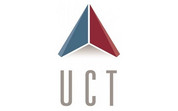Pesticide Analysis in Oil-Based Cannabis Products using UCT's LipiFiltr®

contributed by UCT |
Cannabis testing laboratories face the difficult task of removing a variety of unwanted matrix components from their samples prior to LC-MS or GC-MS analysis. High-lipid samples, in particular, pose a major challenge when testing for a large number of pesticide residues that have different physicochemical properties and need to be detected at very low concentrations. To overcome these challenges, UCT recently introduced a new product for the quick cleanup of fatty samples – LipiFiltr®. The ability to obtain significantly cleaner extracts, ease of use, and time and cost savings make the new LipiFiltr® push-thru cartridges an attractive option. This featured application note outlines the performance benefits achieved using LipiFiltr® for the analysis of pesticides in oil-based cannabis products. The pesticides evaluated in this study include those listed in the Oregon monitoring list (~60 pesticides). CBD oil was used as the representative matrix. A comparison of pre- and post-LipiFiltr® clean-up using full scan GC-MS is also presented to demonstrate the removal of lipid co-extractives.
Log in or register to read this article in full and gain access to The Cannabis Scientist’s entire content archive. It’s FREE!












